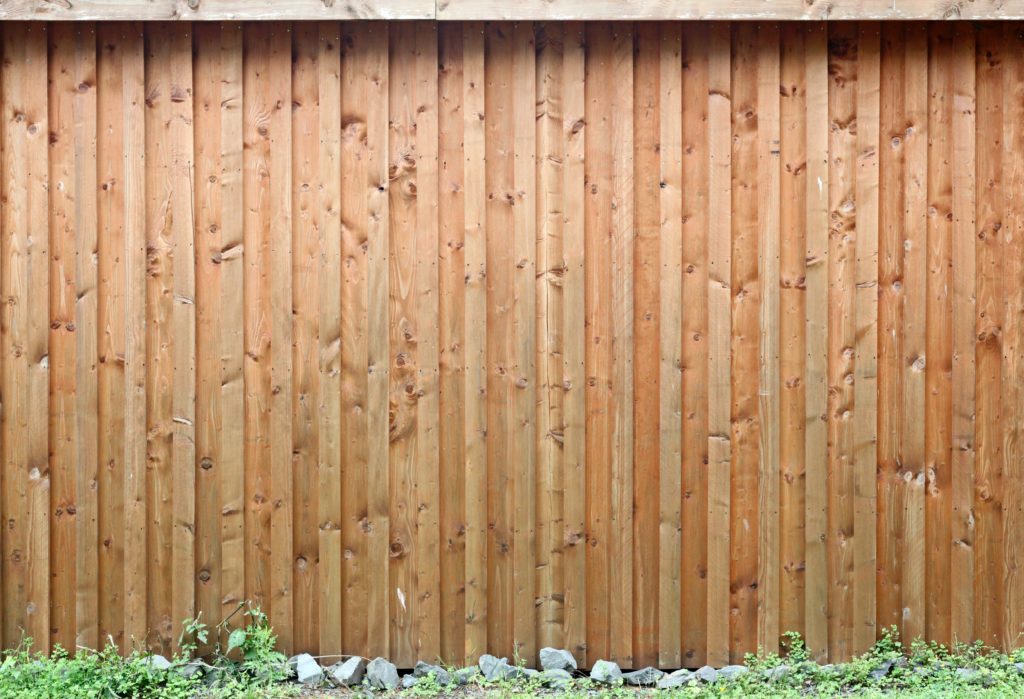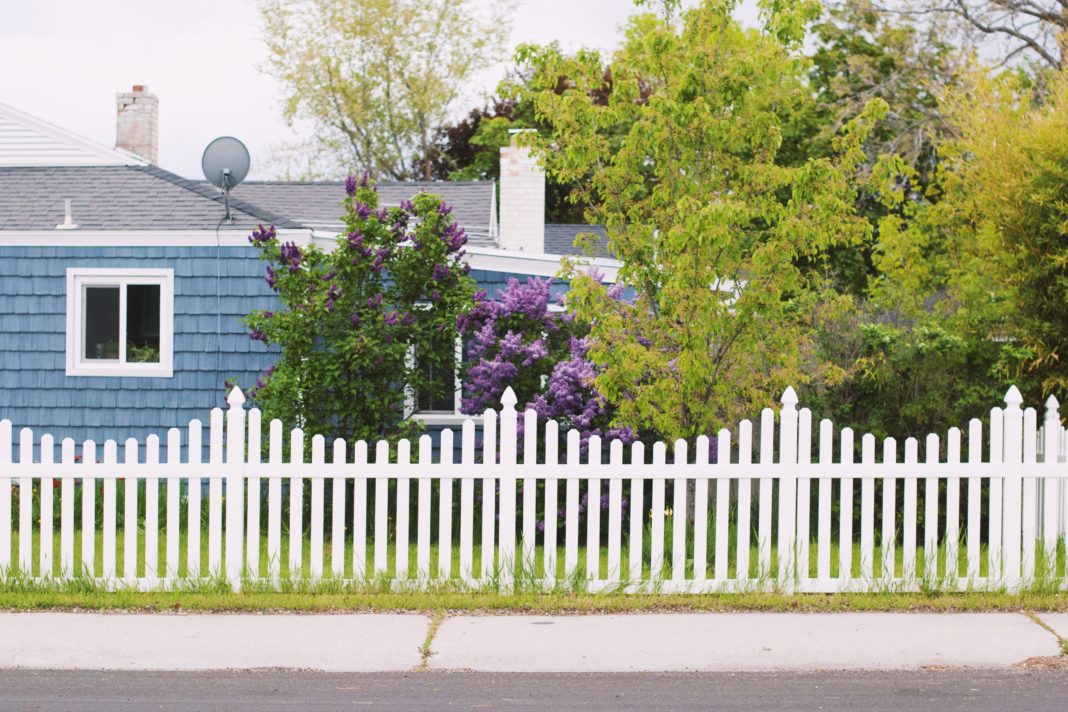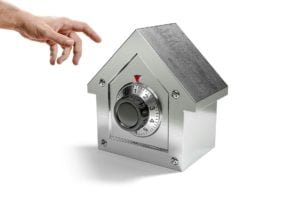Bottom of fence gap ideas – You can repair the gap beneath a gate or fence, by filling it up with various types of methods and materials.
Here are our top choices:
Bottom of Fence Gap Ideas: How Do You Fix a Gap Bottom of Fence
There are many methods you can close gaps in your fencing. In general, their effectiveness is contingent on the fencing option the homeowner has opted for.
These are the most efficient fencing gap sealing tips.
Galvanized steel mesh
Image source: homegardenguides.com
They are extremely effective in sealing the gaps of fences. So, if you’ve got an opening that must be filled, the use of a cloth for hardware should be on your list of solutions.
- Begin by taking measurements of the length of your fence. Make sure to do this before you purchase the hardware cloth because the measurement will help you get an estimate of the size you need to purchase.
- Make room for the cloth for the hardware by digging in the gap.
- Get rid of dirt and dig the trench which will allow you to put the cloth around 3 inches into the soil.
- Once you have finished digging, put one end of the hardware cloth in the trench.
- Use staples of high-quality to attach the other side of the fence made of wood.
- The trench should be filled by laying down a layer of dirt. Once you’ve filled it up, you need to tamp down the dirt. Use a shovel for packing the soil, making sure your cloth has been fixed beneath.
Bottom of Fence Gap Ideas – Timber planks

Cedar is strong, durable, resistant to termites, and generally excellent at coping with the elements. The cedar pickets have the same characteristics, therefore, if you’ve got a fence constructed of wood with gaps, then cedar pickets are an excellent alternative.
To stop the gap:
- Cut the timber planks in order to complete the long length.
- Place them in a horizontal position
- Utilize a drill to join them to the area you do not want.
It may be necessary to dig underneath it to make enough space for the pickets. If you do be sure to ensure that you fill and put into the soil following the installation of the pickets.
Concrete: Bottom of Fence Gap
Concrete block or wall stones to close gaps in chain-links, or other fencing type.
These are steps you must be following.
- Begin by digging directly beneath the gap.
- Make use of a tamper, or a hoe to level and then tamp down the dirt layer in the bottom of the trench
- Build a strong base for the blocks by pouring sand in the trench. By putting enough sand in the trench to make it around an inch thick will help create the best base.
- Place the concrete blocks on the sand, then place them in layers until you have filled the gap.
- Last but not least, reinforce the concrete wall using the dirt you dug up during the process of digging the trench.
River rocks or decorative stones
If you’re looking for a simple solution that doesn’t require digging, then go with decorative stones and clean river rock.
For the best outcomes:
- Begin by collecting them which are not less than 1 inch in diameter.
- Place them on the other side of the fence. Make sure they are covered with the area that you don’t want.
- When you’re done, you can take an arrow rake and apply it to evenly distribute them out over the space.
It is important to note that wall stones can be as effective as decorative stones or river stones in closing gaps.
Chicken wire or wire mesh
Wire mesh , also known as chicken wire is ideal for fixing gaps in chain-link or wood fences.
To close the gap, you must do the following.
- Begin by digging the trench.
- Make a cut in the wire mesh and ensure that it is able to cover the width of the gap and the length of the trench.
- Connect the chicken wire or metal mesh at the fence’s bottom. It is possible to use staples if you’re dealing with a fence made of wood.
- With a portion of the fence wire in the trench and the other one securely fixed to the fencing’s bottom, cover it with the soil you excavated in order to cover the lower part and make it more difficult to work beneath it. Utilize a shovel for this.
- Set a few rocks over the top of the trench for extra support and to stop digging.
How can you repair a gap in a chain-link fence?
If you have gaps in the chain-link fence you can fill it in several ways. Here are a few of the most efficient methods of closing gaps in your chain-link fence.
Garden fences with decorative garden designs

Although decorative garden fences are designed to be used in the yard however, they could be handy when it comes to repairing gaps in chain-link fences. All you need to do is move sections across the space in question. Then, apply zip ties to keep the fence.
Tent stakes
It is not difficult for a pet or wild animal to get through the chain-link fence. To ensure the top of the fence and to ensure it’s secure against intruders and trespass, use stakes – – that are designed for tents to provide the base with an additional level of support. To get the most effective outcomes, ensure that you use them in an angle.
J hooks
J hooks are j-shaped steel bars that can be utilized to anchor an existing chain-link fence. For use, you simply need to insert these into ground and utilize the J-shaped ends to secure the fence in the ground.
Bottom of Fence Gap: Cinder blocks
If you’ve got a few of blocks of cinder, you could stack them in the gap. Although this might not stop you from digging through the fencing however, it’s a suitable temporary solution.
Locate a fencing expert in your area
If you are interested in more than seeking out an alarm-proof fence or if they’re only interested in sealing up fence gaps, you are able to find experts who meet your requirements.
The service they offer immediately matches you with the best-rated local fence repair experts.
By using the site it is possible to get three estimates quickly from real qualified experts in your region within just two minutes. By doing this, you will have peace of mind knowing you’ll be managed by experts with an impressive amount of experience.
Here’s how it is done.
- Scroll up to the very top, and input your Zip code.
- Answer your questions regarding your fencing requirements and preferences
- Your information will be passed on to three experts from the local area.
- Then you will receive an estimate of the cost in writing for the task and helpful advice.
There is no obligation to employ. This is a tool for free and can be used at your own discretion whether you require more information about fixing your fence or some advice from an expert.
What is the cause of gaps in a fence or in a gate?
How do the gaps that form under fences and gates start developing?
These are some of the more frequent reasons.
Pets
Pets, just like dogs, could play in the fence. If the fence isn’t well-anchored it could cause a large enough space which could be a problem.
Natural terrain
Sometimes, the terrain makes it difficult to create a fence that is gap-free. The gaps may get bigger because of erosion.
The movement of soil
If your fence is constructed on clay or sandy soils, you may observe a gap forming as time passes. This is due to the fact that the soils tend to become more compact over time. They also are prone to shrink and contract frequently. They tend to expand when you live in a region that experiences extreme weather fluctuations.
Expanding, contraction or settling may cause gaps in two primary ways. The shifting could cause tilting or movement in fence posts. The soil may also shift downwards, creating a large gaps between the ground and the base part of the fence.
Poor fence installation
Poor fencing installation is the most common reason for an under-the-fence gap. This could be the result of errors when taking measurements, failing to make adequate allowances for the terrain, or using improper installation techniques.
What are the reasons to close the gap?
Here are the top reasons that homeowners should to close fences as well as gate openings.
To keep pets in a cage similar to dogs
The necessity of sealing gaps comes from one of the reasons listed below.
- Make sure your pets are safe
Dogs can get through a gap in the fence. It could be risky as the dog could be pushed over by a vehicle or become lost.
- Beware of lawsuits and liabilities
If you have a dog that is aggressive and you want to give it an easy escape route can be an opportunity for a lawsuit to occur.
- Make sure that dangerous pets are kept away from the family pets
If your dog in your neighborhood is not friendly or a fence gap is present, it could put your family members in danger.
For anyone who owns pets, repairing the gap, by filling it with wood posts, stones or blocks is crucial. Making this fix will go a long ways to increase the odds of a peaceful coexistence with the neighbor.
Do not allow animals in the property
Wild animals may exploit gaps in your fence to get into your property. If animals do so, they will damage any plant that are in your garden. They could cause damage to fixtures within your backyard. They can also make the mess of your garbage. They can also pose an annoyance to you and your family ones.
Filling in any holes or gaps in your fence with stones or bricks, blocks or posts is a great way homeowners can not only ensure the safety of their pets and their loved children.
Conclusion
The appearance of a fence can be damaged by gaps. appearance of fences. The presence of gaps, in the front or back yard, is typically an indication of poor fencing installation. Thus, fixing gate or fence gaps may be required to make the appearance of a yard more appealing to the eye.


